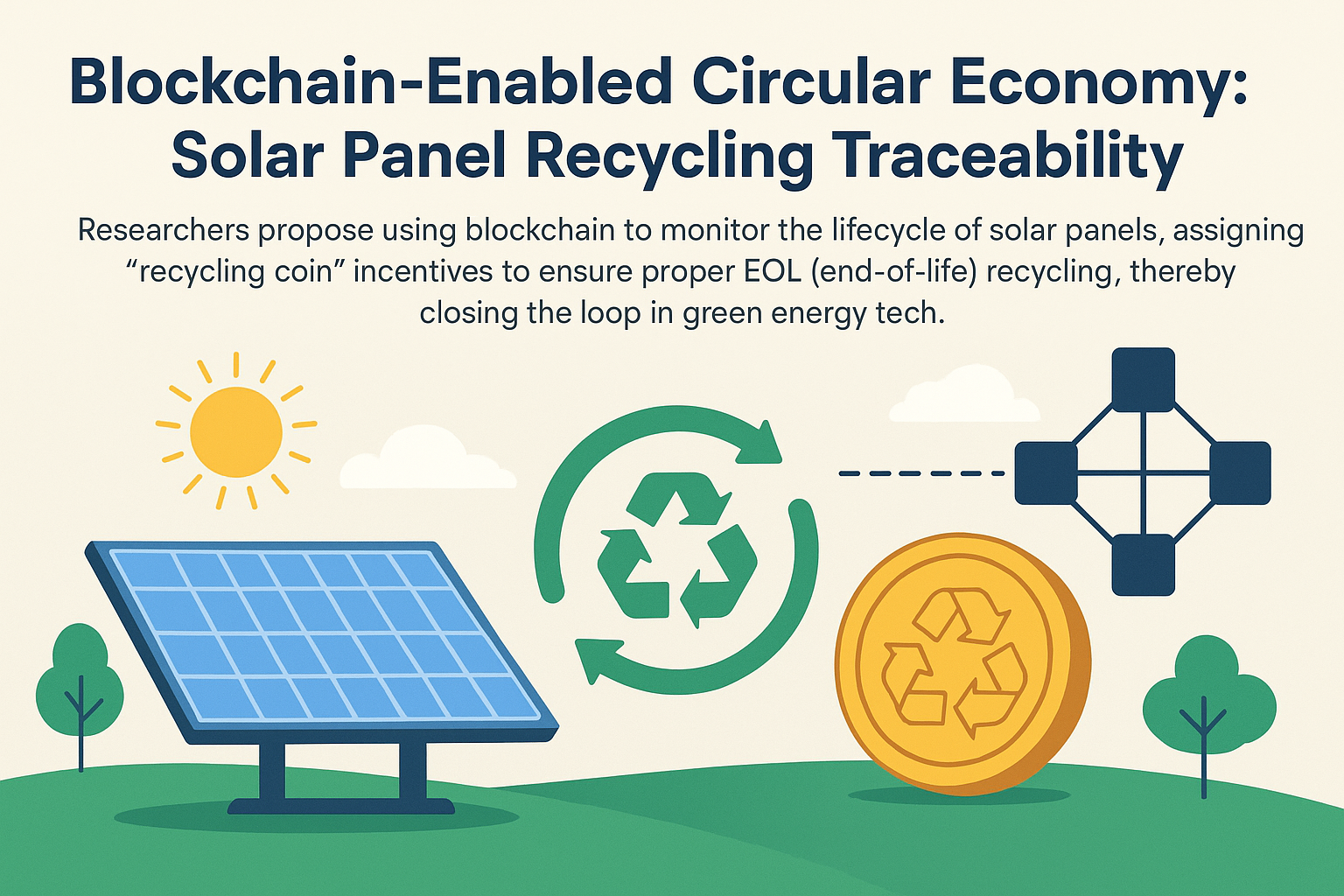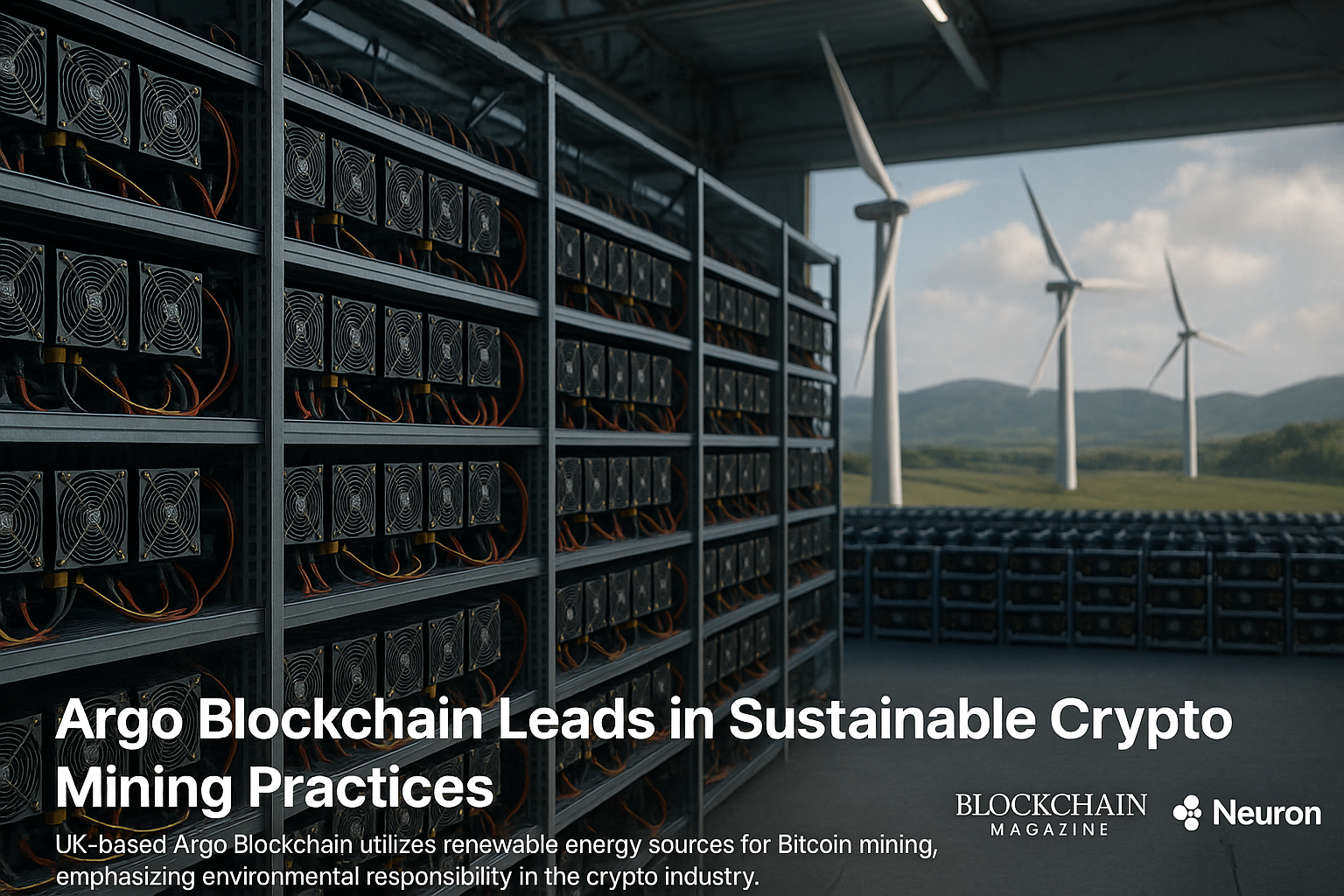As the world transitions toward renewable energy, solar panels have become one of the most visible symbols of a cleaner, greener future. But behind the glossy panels that convert sunlight into power lies a growing environmental challenge — what happens when these panels reach the end of their lifespan?
By 2050, it’s estimated that the world will generate millions of tons of retired solar panels annually. Most contain valuable materials such as silicon, silver, aluminum, and glass — all of which can be recovered and reused. Yet, without proper tracking and incentives, a large percentage of these materials end up as waste, negating the environmental benefits of solar technology. This is where blockchain technology could change everything.
The Challenge of Solar Panel End-of-Life (EOL) Management
Traditional recycling systems struggle with traceability. Once a solar panel is manufactured, installed, and eventually decommissioned, there’s often no standardized mechanism to follow its lifecycle or ensure proper recycling. The result is a fragmented system with inconsistent reporting, weak accountability, and little motivation for companies or consumers to engage in recycling programs.
Moreover, the process of identifying, transporting, and dismantling used panels is resource-intensive. Without a transparent and trusted method to verify the origin, status, and condition of each panel, both recyclers and regulators face uncertainty — and valuable materials are lost in the process.
Enter Blockchain: Traceability Meets Sustainability
Researchers have proposed using blockchain-enabled lifecycle tracking to solve these issues. In this model, each solar panel would be digitally registered on a blockchain ledger at the moment of manufacture. From production to installation, operation, and finally disposal or recycling, every step would be recorded as an immutable transaction.
When the panel reaches its end-of-life stage, recyclers can verify its authenticity, ownership, and material composition directly from the blockchain. This ensures transparency and trust across the entire chain — from manufacturers to recyclers and regulators.
Introducing the “Recycling Coin”
To make this system economically viable, the proposal includes a tokenized incentive mechanism called “Recycling Coin.”
Each properly recycled solar panel would generate tokens that can be redeemed for rewards, subsidies, or even traded on digital markets. This introduces a circular economy model, where proper environmental behavior directly translates into economic value.
Manufacturers could use these tokens to offset future production costs, consumers could earn them by returning old panels, and recyclers could gain verifiable proof of compliance. In short, blockchain turns responsible recycling into a financially rewarding ecosystem.
Closing the Loop in Green Energy Tech
This blockchain-based traceability and incentive model represents more than just technological innovation — it’s a new paradigm for sustainable accountability. By ensuring that every solar panel’s journey is monitored from cradle to grave, the system helps close the loop in renewable energy production.
-
Transparency: Every panel’s origin, maintenance, and disposal data are verifiable.
-
Incentivization: Stakeholders are rewarded for eco-friendly actions.
-
Scalability: Tokenized models can extend to other renewable technologies like wind turbines or batteries.
A Convergence of Blockchain, Tokenization, and Sustainability
This concept sits at the intersection of three powerful global movements:
-
Sustainability: Reducing waste and reusing valuable materials.
-
Blockchain Technology: Providing trustless, transparent verification.
-
Tokenization: Turning environmental responsibility into measurable digital value.
As researchers on arXiv suggest, blockchain may not only optimize the energy transition but also ensure that the very technologies powering the green revolution remain green throughout their entire lifecycle.
In a world where innovation often creates new challenges, the fusion of blockchain and circular economy principles could ensure that renewable energy truly lives up to its promise — clean, transparent, and infinitely sustainable.




